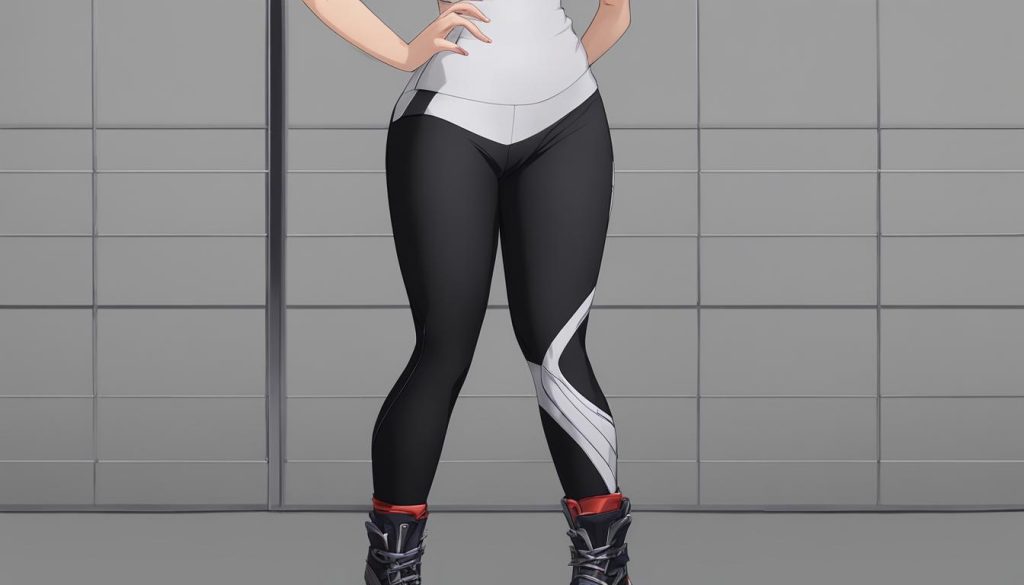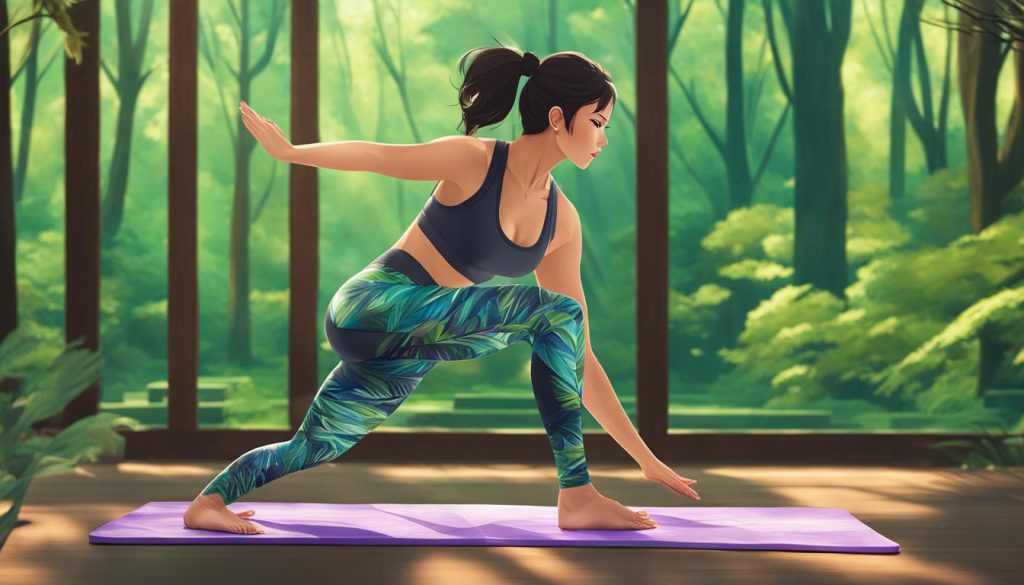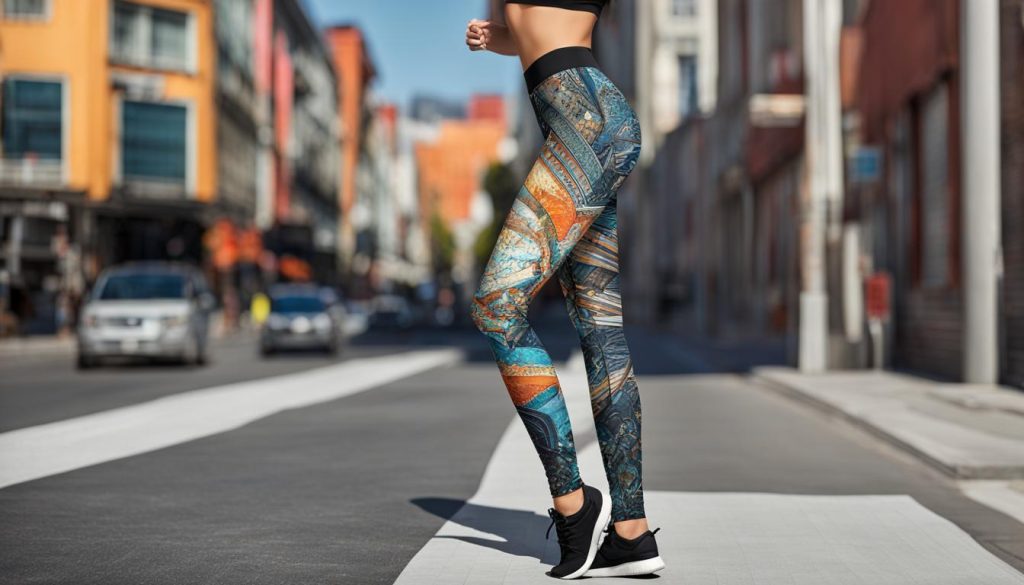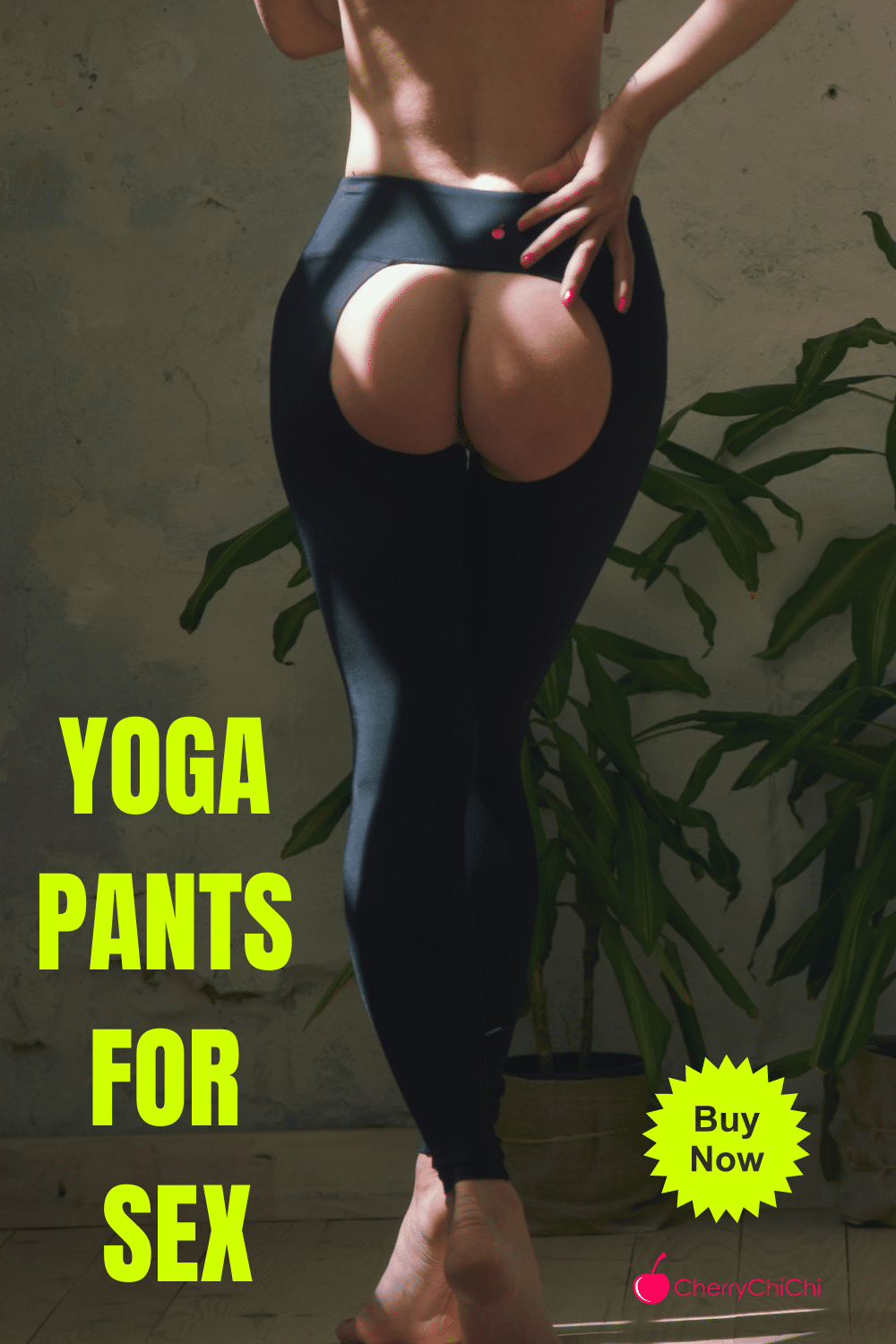
Proper sizing is crucial when it comes to leggings. Online shopping for leggings has become popular, but getting the right fit is essential for comfort. Understanding legging sizing, decoding size charts, and measuring your body accurately can help determine if leggings are too small. Signs of tight leggings include muffin top, camel toe, and a sensation of leggings not fitting like a second skin. Knowing these indicators and using the transparency test can help you avoid sizing surprises and find leggings that feel great.
Key Takeaways:
- Proper sizing is crucial for comfortable leggings.
- Signs of tight leggings include muffin top, camel toe, and a sensation of leggings not fitting like a second skin.
- Understanding legging sizing and using the transparency test can help avoid sizing surprises.
- Decoding size charts and measuring your body accurately are important for finding the right fit.
- Choosing leggings that feel great is essential for an enjoyable wearing experience.
Decoding Sizing Conventions: Understanding Legging Sizing
When it comes to finding the perfect pair of leggings, understanding legging sizing can be a bit of a puzzle. With different sizing conventions used by various brands, it’s important to decode size charts and measure yourself accurately to ensure a proper fit. Let’s explore some key factors to consider when determining your legging size.
Decoding Size Charts
Size charts are your go-to resource for understanding legging sizing. Each brand may have its own unique sizing conventions, so it’s crucial to refer to their specific size chart. Pay attention to measurements such as waist, hips, and inseam, as they can help you determine the best size for your body. Take the time to compare your measurements to the size chart to ensure an accurate fit.
Measuring for Accuracy
Measuring yourself accurately is essential for finding the right size leggings. Use a soft tape measure and follow measurement guides provided by the brand. Take measurements of your waist, hips, and inseam to get precise numbers. By measuring yourself correctly, you can avoid the disappointment of ordering leggings that are too small or too big.
Sizing for Different Body Types
Understanding your body type can also play a role in finding the right legging size. Different body types may require specific sizing tips to ensure a comfortable and flattering fit. Apple body shapes may benefit from choosing leggings that are fitted through the bust and waist. Pear body shapes should look for leggings that are fitted through the waist and hips. Hourglass body shapes can opt for leggings that are fitted through the bust, waist, and hips. Rectangle body shapes may want to choose leggings that accentuate the waist. Inverted triangle body shapes can consider leggings that create the illusion of curves in the hips and thighs. By considering your body type, you can find leggings that are tailored to your unique shape.
| Body Type | Legging Sizing Tips |
|---|---|
| Apple | Fitted through bust and waist |
| Pear | Fitted through waist and hips |
| Hourglass | Fitted through bust, waist, and hips |
| Rectangle | Accentuate the waist |
| Inverted Triangle | Create the illusion of curves in hips and thighs |
Decoding the sizing conventions and understanding legging size charts can help you find leggings that fit perfectly. By measuring yourself accurately and considering your body type, you can ensure a comfortable and flattering fit every time.

1. Muffin Top: If the waistband of your leggings cuts into your skin, creating a bulge around your midsection, it’s a clear indicator that your leggings are too tight.
2. Camel Toe: A camel toe occurs when the fabric of your leggings is too tight in the crotch area, causing it to ride up and create a visible separation. This is a sign that your leggings are too small and you may need a larger size.
3. Slipping Down: If your leggings constantly slide down during wear, it’s a sign that they are too small and unable to provide a secure fit. The fabric should stay in place and not require constant readjustment.
4. Not-so-second-skin Sensation: Leggings should fit like a second skin, snugly hugging your body without feeling overly restrictive. If you feel discomfort or a lack of flexibility while wearing your leggings, it may be a sign that they are too tight.
By paying attention to these indicators, you can easily identify if your leggings are too small and make the necessary adjustments to find a better fit. Remember, comfort is key when it comes to leggings, so don’t hesitate to try different sizes and styles until you find the perfect pair that feels great on your body.
How to Measure for Leggings Sizing: Tips for Accurate Sizing
Accurately measuring yourself is crucial when it comes to finding the right size leggings. To ensure a perfect fit, follow these tips for measuring your waist, hips, and inseam. Using a soft tape measure, wrap it around the narrowest part of your waist to get your waist measurement. For your hip measurement, wrap the tape measure around the fullest part of your hips. Finally, to determine your inseam length, measure from your crotch to the desired length of your leggings.
Once you have your measurements, refer to the brand’s size chart to find your corresponding size. Keep in mind that sizes may vary between brands, so it’s important to consult the specific size chart for the leggings you’re interested in. If you fall between sizes, consider the fabric and stretchiness of the leggings. Some fabrics, like spandex, have more give and can accommodate slight variations in measurements.
When trying on leggings, make sure they fit snugly but allow for comfortable movement. They should feel like a second skin without being too tight or restrictive. Remember that different body types may require slight adjustments in sizing. If you have a curvier figure, you may need to size up to accommodate your hips and thighs. Conversely, if you have a slimmer frame, you may opt for a smaller size for a more form-fitting look.
| Measurement | How to Measure |
|---|---|
| Waist | Measure around the narrowest part of your waist |
| Hips | Measure around the fullest part of your hips |
| Inseam | Measure from your crotch to the desired length of your leggings |
By following these measuring tips and considering your body type, you can ensure a perfect fit when shopping for leggings. Remember that accurate measurements are the key to finding leggings that not only look great but also provide optimal comfort and freedom of movement during your workouts.
Leggings Sizing for Different Body Types and Shapes
When it comes to finding the right leggings size, understanding your body type and shape is key. Different body types have different proportions, and certain leggings styles and sizes can complement each shape to enhance comfort and confidence. Here are some tips for sizing leggings based on different body types:
Apple Body Shapes:
For those with apple-shaped bodies, it’s best to look for leggings that are fitted through the bust and waist. This helps create balance and definition. Choose leggings with a high-rise waistband that provides support and prevents any discomfort or slippage. Opt for moisture-wicking and breathable fabrics like polyester and nylon to keep you comfortable during workouts.
Pear Body Shapes:
Pear-shaped bodies typically have a smaller waist and wider hips. Look for leggings that are fitted through the waist and hips to highlight your curves. Compression fabric can provide extra support and help create a streamlined look. Consider yoga pants made from cotton and spandex for a comfortable and flexible fit.
Hourglass Body Shapes:
Hourglass-shaped bodies have well-defined busts, waists, and hips. Look for leggings that are fitted through the bust, waist, and hips to accentuate your curves. Fabrics like Lycra and jersey knit provide stretch and flexibility while enhancing your natural shape. Choose high-rise leggings to define your waist and create a balanced silhouette.
Rectangle Body Shapes:
Rectangle-shaped bodies have a more straight and athletic figure. Opt for leggings that accentuate your waistline and create the illusion of curves. Consider ponte knit fabrics that offer structure and a more tailored look. Look for leggings with details like ruching or color-blocking to add visual interest and create definition.
Inverted Triangle Body Shapes:
Inverted triangle-shaped bodies have broader shoulders and narrower hips. Choose leggings that create the illusion of curves in the hips and thighs. Fabrics like chiffon, rayon, and spandex can add softness and movement to your lower body. Look for leggings with patterns or details on the lower part to draw attention and balance your overall shape.
By understanding your body type and choosing leggings that complement your shape, you can find the perfect fit that enhances your comfort and confidence during workouts.
The Importance of Fabric: Choosing the Right Materials
When it comes to leggings, choosing the right fabric is crucial for comfort and performance. The fabric you select can make a significant difference in how your leggings feel and function during workouts. Here are some key factors to consider when choosing fabric for leggings:
Comfort
Comfort should be a top priority when selecting leggings fabric. Look for materials that are soft against the skin and provide a comfortable fit. Fabrics like polyester, nylon, and spandex blend offer a smooth and cozy feel, ensuring that you can move freely and comfortably during your workouts.
Moisture-Wicking
If you’re someone who tends to sweat during workouts, moisture-wicking fabric is essential. This type of fabric is designed to pull moisture away from your skin and quickly evaporate it, keeping you dry and cool. Polyester and nylon are popular choices for moisture-wicking leggings fabric, as they are highly effective in managing sweat and moisture.
Breathability
Leggings with good breathability allow air to flow through the fabric, preventing overheating and promoting ventilation. Look for fabrics with open weaves or mesh panels that allow for better airflow. Breathable fabrics like polyester and nylon are excellent options for keeping you cool and comfortable during intense workouts.
| Fabric Type | Comfort | Moisture-Wicking | Breathability |
|---|---|---|---|
| Polyester | ✓ | ✓ | ✓ |
| Nylon | ✓ | ✓ | ✓ |
| Spandex | ✓ | ✓ | ✓ |
By considering factors such as comfort, moisture-wicking, and breathability, you can make an informed choice when it comes to selecting the right fabric for your leggings. Remember to prioritize your personal comfort and preferences when making your decision, as the right fabric can enhance your overall leggings experience.
Consider Your Workout: Choosing the Right Leggings for Different Activities
When it comes to choosing the right leggings for your workouts, it’s important to consider the specific activities you’ll be engaging in. Different workouts require different features and benefits from your leggings. Here are some tips for selecting the perfect workout-specific leggings:
Yoga and Pilates:
For yoga and Pilates, it’s best to opt for form-fitting leggings that allow for ease of movement. Look for leggings with a four-way stretch fabric that provides flexibility and support. High-waisted leggings can help keep your core engaged and provide a secure fit during stretching and bending.
Running or High-Intensity Interval Training (HIIT):
For activities that involve a lot of movement and impact, such as running or HIIT workouts, choose leggings that offer more support and compression. Look for moisture-wicking fabrics that help keep you dry and comfortable during intense workouts. Leggings with a wide waistband and a drawstring closure can provide extra support and prevent them from slipping down.
Weightlifting or Strength Training:
When it comes to weightlifting or strength training, look for leggings that are made of a durable and squat-proof fabric. Leggings with a high percentage of spandex can provide the necessary stretch and flexibility for lifting weights. Consider leggings with a reinforced waistband for extra support and stability.
Remember to choose leggings that not only meet the demands of your workout but also make you feel confident and comfortable. With the right leggings, you can focus on your fitness goals and enjoy your workouts to the fullest.
| Workout | Legging Features |
|---|---|
| Yoga and Pilates | Form-fitting Four-way stretch fabric High-waisted |
| Running or HIIT | Supportive and compressive Moisture-wicking fabric Wide waistband with drawstring |
| Weightlifting or Strength Training | Durable and squat-proof fabric High percentage of spandex Reinforced waistband |
Don’t Forget About Accessories: Enhancing Your Leggings Experience
Accessories can elevate your leggings experience, adding both style and functionality. Investing in the right accessories can enhance your comfort, performance, and overall satisfaction with your leggings. Here are some essential accessories to consider:
- Shoes: A good pair of shoes is crucial for your comfort and performance while wearing leggings. Choose shoes that provide proper support and cushioning for your chosen activities.
- Sports Bra: Wearing a supportive sports bra is important to prevent discomfort and injury during workouts. Choose a bra that offers the right level of support for your body type and exercise intensity.
- Headbands: Headbands not only keep your hair in place but also add a stylish touch to your leggings outfit. Choose headbands that are comfortable, moisture-wicking, and complement your personal style.
- Socks: The right pair of socks can make a difference in your leggings experience. Look for moisture-wicking and cushioned socks that provide comfort and support during your workouts.
- Waist Packs: Waist packs are a practical accessory for carrying essentials such as keys, cards, and phones while you’re on the go. Look for waist packs that are lightweight, adjustable, and have enough storage space for your needs.
Remember, accessories are not just add-ons but essential elements that can enhance both the functionality and style of your leggings outfit. Choose accessories that complement your personal taste and meet your specific needs for each workout session.
Enhancing Performance and Style
Accessories not only enhance the practical aspects of wearing leggings but also allow you to express your personal style. Experiment with different accessories to create unique looks that reflect your fashion taste and boost your confidence during workouts. Whether it’s a sleek sports watch, a trendy gym bag, or a fashionable water bottle, the right accessories can make you feel good and motivate you to stay active.
When choosing accessories, consider both functionality and aesthetics. Look for items that are durable, practical, and visually appealing. Invest in high-quality accessories that complement the quality of your leggings, ensuring a cohesive and stylish ensemble.
| Accessories | Functionality | Style |
|---|---|---|
| Sports Bra | Provides support and prevents discomfort during workouts | Comes in various designs and colors to match your leggings |
| Shoes | Offers comfort, support, and stability for different activities | Available in a wide range of styles and colors |
| Headbands | Keeps hair away from your face and absorbs sweat | Adds a stylish and trendy touch to your workout look |
| Socks | Provides cushioning, moisture-wicking, and arch support | Comes in various patterns and colors to match your leggings |
| Waist Packs | Convenient storage for essentials during workouts | Available in different designs and colors to suit your style |
Don’t Forget About Style: Expressing Your Personal Fashion Taste
When it comes to leggings, style isn’t just about functionality – it’s also about expressing your personal fashion taste. Your leggings can be a reflection of your individuality and make a fashion statement while still providing comfort and performance. Whether you prefer classic black leggings or bold patterns and vibrant colors, there are countless options to suit your unique style.
Adding a touch of style to your leggings outfit can boost your confidence and make your workouts more enjoyable. Consider choosing leggings with trendy details such as mesh panels, cutouts, or prints that reflect your personality. Pair them with a fashionable top or layer with a stylish jacket to create a complete look that effortlessly transitions from the gym to everyday wear.
Accessorizing is another way to enhance your leggings experience and elevate your style. Add a pop of color with a statement scarf or accessorize with a stylish hat or headband. Don’t forget about footwear – choose a pair of sneakers or athletic shoes that not only provide support and comfort but also complement your leggings ensemble.
| Benefits of Expressing Personal Style with Leggings | Examples |
|---|---|
| Boosts confidence and self-expression | Wearing leggings with unique patterns and colors that represent your style. |
| Enhances motivation during workouts | Choosing leggings that make you feel good and inspire you to push harder. |
| Creates a sense of personal empowerment | Pairing leggings with stylish accessories that reflect your personality. |
Remember that every body is unique, and there are no rules when it comes to fashion-forward leggings. Experiment with different styles, patterns, and colors to find what makes you feel confident and comfortable. Let your leggings be a canvas for self-expression and let your personal fashion taste shine.
The Evolution of Leggings Sizes: From Vintage to Modern Leggings
Legging sizes have undergone significant changes over time, reflecting the evolving fashion industry and shifting body ideals. Vintage leggings had their own unique sizing systems, often using alpha systems or unconventional numeric scales. These vintage sizes can be perplexing when shopping for vintage clothing, as they may differ from modern sizes. Understanding the labels and decoding vintage sizes is crucial for finding the right fit.
The transition from vintage to modern leggings brought about changes in sizing conventions. Numeric sizing became more prevalent in the late 20th century, providing a standardized approach to legging sizes. However, variations persisted between countries and even within brands, causing confusion for shoppers. Additionally, fashion companies introduced more generous sizing in the 1980s, emphasizing comfort and inclusivity.
It’s important to note that sizes are merely a guide, and it’s best to focus on finding clothes that fit well rather than fixating on a specific number. Taking measurements and comparing them to size charts can be helpful when determining the right size for vintage leggings. Trying on clothes is always recommended to ensure a proper fit and avoid disappointment.
In conclusion, the world of leggings sizing has evolved over time, with vintage sizes transitioning to modern conventions. Understanding the differences between vintage and modern leggings can alleviate sizing confusion and ensure a comfortable fit. Remember to prioritize finding leggings that make you feel great, regardless of the number on the tag.
Deciphering Vintage Sizes: Understanding the Labels
When it comes to shopping for vintage clothing, understanding the sizing can be a bit of a challenge. Vintage sizes often differ from modern sizes, and the labels may use different sizing conventions. To ensure you find the right fit, it’s important to decipher these vintage sizes and understand the labels.
Vintage clothing labels may use alpha systems, such as XS, S, M, L, or numeric sizing, like 6, 8, 10, etc. Keep in mind that alpha systems may vary between brands, so it’s essential to check each brand’s size chart. If you’re unsure about the vintage sizing, taking your measurements and comparing them to vintage size charts can provide valuable guidance.
Companies that offered mail order in the past often introduced standardized sizing, which can be helpful when deciphering vintage sizes. Their size charts provide a reference point for understanding the specific measurements associated with different alpha or numeric sizes. Utilizing these vintage size charts can assist you in finding the right size and ensuring a proper fit.
Remember that vintage sizes may differ from modern sizes, so it’s always a good idea to try on clothes before purchasing. Take advantage of the size guides and resources available to make your vintage shopping experience more enjoyable and successful.
| Sizing Convention | Description |
|---|---|
| Alpha Systems | Used letters like XS, S, M, L to denote sizes. |
| Numeric Sizing | Used numbers like 6, 8, 10, etc., to represent sizes. |
| Standardized Sizing | Introduced by companies offering mail order, providing size charts and standardized measurements. |
In conclusion, understanding vintage sizes and deciphering the labels is essential when shopping for vintage clothing. Pay attention to the sizing conventions used, whether it’s alpha systems or numeric sizing. Utilize vintage size charts and standardized sizing information to determine the right size for you. Remember that vintage sizes may differ from modern sizes, so trying on clothes is crucial to ensure a proper fit. With this knowledge, you can confidently navigate the world of vintage fashion and find unique pieces that suit your style.
Conclusion
Decoding the fit of leggings is crucial in finding the right leggings for your body. By understanding legging sizing, measuring accurately, and recognizing signs of tight leggings, you can avoid the discomfort of wearing leggings that are too small. Remember to consider your body type and choose fabrics that are comfortable and functional.
Additionally, think about the activities you’ll be doing in your leggings and select the appropriate style and support. Don’t forget to enhance your leggings experience with accessories that add both style and functionality. Express your personal fashion taste while prioritizing comfort and fit.
Lastly, keep in mind that sizes can vary, especially when it comes to vintage clothing. Instead of fixating on a specific number, focus on finding leggings that fit well and make you feel great. With these tips in mind, you can confidently navigate the world of leggings and find the perfect fit for your unique body.
FAQ
How can I tell if my leggings are too small?
Signs of tight leggings include a muffin top, camel toe, fabric that constantly slips down, and a sensation of leggings not fitting like a second skin.
How do I decode legging sizing conventions?
Legging size charts are a valuable navigation tool. Understanding different sizing conventions and comparing brands can help you find the right fit.
How do I measure myself for leggings sizing?
Use a soft tape measure to accurately measure your waist, hips, and inseam. Follow measurement guides and consider your body type for precision in sizing.
Are there specific sizing tips for different body types?
Yes, different body types require specific considerations. Apple, pear, hourglass, rectangle, and inverted triangle body shapes benefit from different legging fits.
What fabric should I look for in leggings?
High-quality fabrics like polyester, nylon, and spandex are commonly used. Different body types may benefit from specific fabric choices for comfort and functionality.
How do I choose the right leggings for different activities?
Consider the specific activities you’ll be doing. Yoga and Pilates may require form-fitting leggings, while running or HIIT may benefit from more support and compression.
What accessories can enhance my leggings experience?
Investing in good shoes and a supportive sports bra is important. Consider additional accessories like headbands, socks, and waist packs for style and functionality.
Should I prioritize style when choosing leggings?
While comfort is important, wearing leggings that make you feel good can boost confidence. Choose patterns, colors, and designs that reflect your personal style.
How have legging sizes evolved over time?
Legging sizes have changed over the decades, with variations in sizing conventions and even within brands. It’s best to focus on finding clothes that fit well, rather than tying self-esteem to a specific number.
How do I understand vintage clothing sizes?
Vintage sizes may use different conventions, so understanding vintage sizing systems is important. Taking measurements and comparing them to vintage size charts can help determine the right size.
How can I decode the fit of leggings?
By understanding legging sizing, signs of tight leggings, and how to measure accurately, you can determine if leggings are too small. Consider your body type, fabric, and specific activities for the perfect fit.









